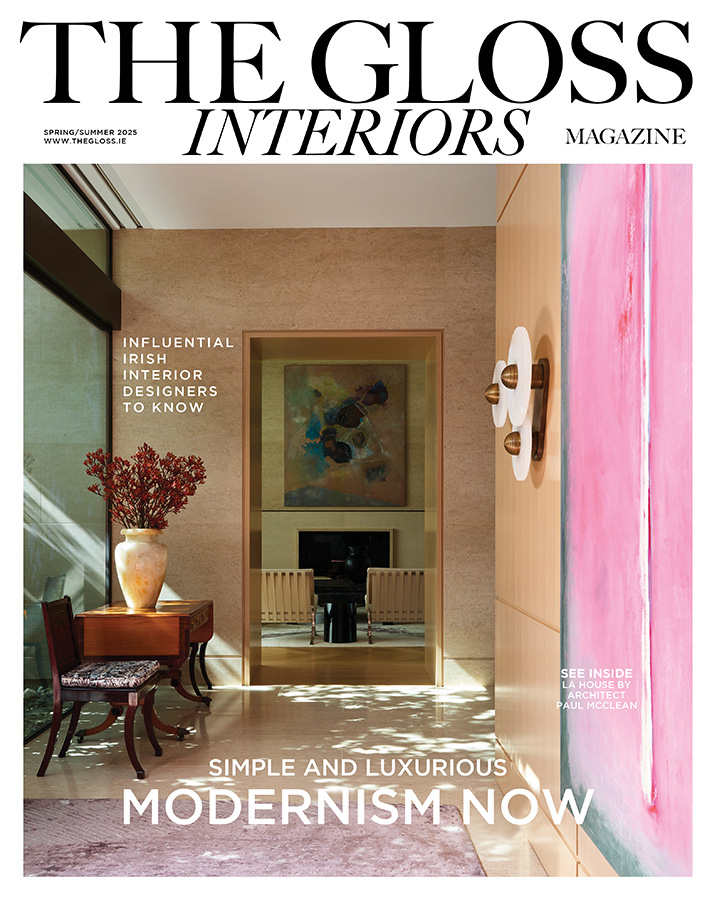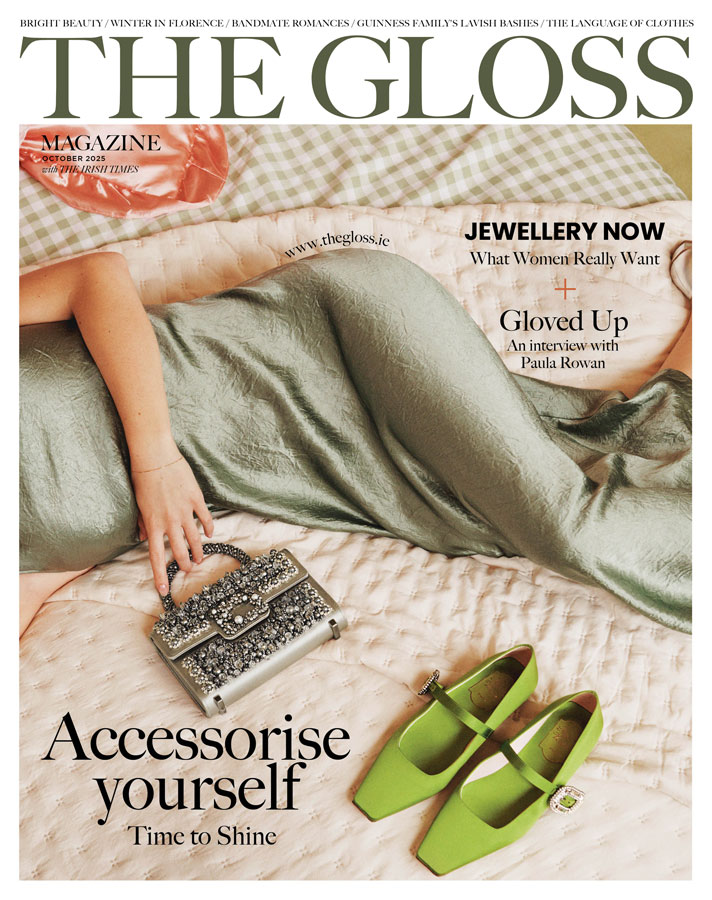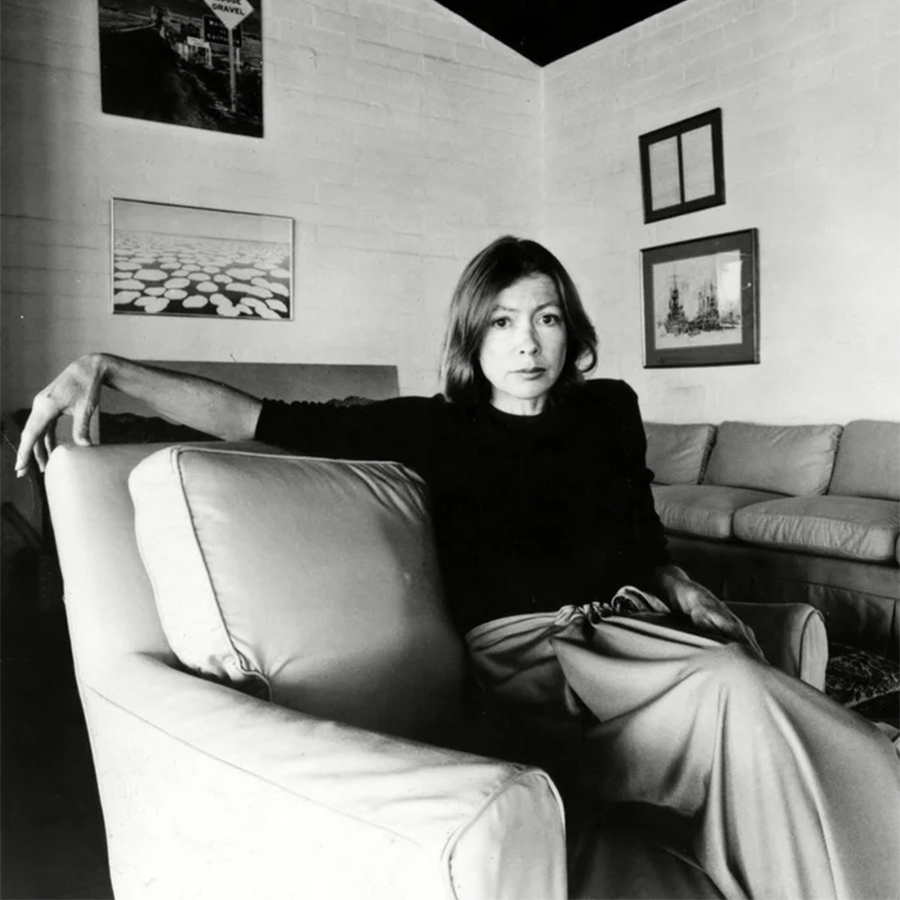The Writer’s Table …
Joan Didion was a recipe for California cool, one part propulsive, minimalist prose, and one part slim figure and stone-faced stare. Didion’s essays, novels and journalism captured the discontent of the 1960s, and the loopy, lost feeling that comes over a person in the Golden State. But despite her detached persona, she was a super-achiever. She thought of herself as a novelist, but her most lasting books are probably both essay collections: Slouching Towards Bethlehem (1968) and The White Album (1979). And at the same time, during her greatest career-building years, she was cooking sit-down dinners for forty and mothering a little girl, her adopted daughter Quintana Roo Dunne.
Didion’s domesticity was not exactly behind-the-scenes. As the first great female practitioner of New Journalism, Didion often wrote about her personal life, an act that feminised the literary myth of those times. But domesticity wasn’t quite part of her persona, either. Her giant Le Creuset pots and lentil soups, like her tow-headed daughter and famous friends, are part of the background as her prose speeds by on its way to elsewhere – or perhaps to nowhere, as was her perennial fear. The writer Katie Roiphe noted in Didion’s obituary in The New York Times that Didion’s revelations were only ‘seemingly’ personal – it’s an important qualification, since Didion was somehow both forthcoming and not, a cipher to the end.
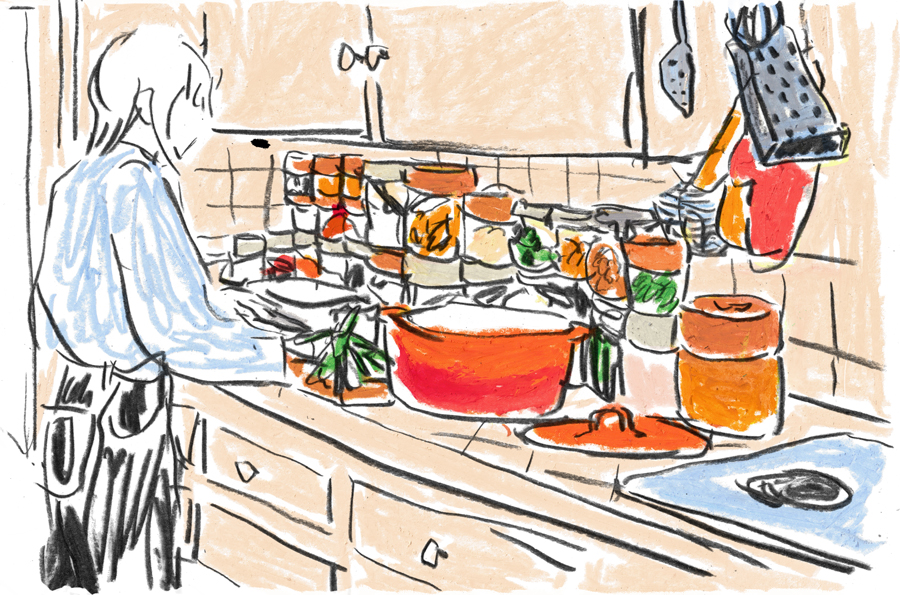
Didion always made the domestic look off-hand. ‘I remember taking a 25-mg. Compazine [a medication used to treat nausea, migraines, schizophrenia, psychosis and anxiety] one Easter Sunday and making a large and elaborate lunch for a number of people, many of whom were still around on Monday,’ she wrote breezily in the title essay for The White Album. Or, attending a recording session for the band The Doors, she casually drops that there were ‘paper bags half-filled with hard-boiled eggs and chicken livers and cheeseburgers and empty bottles of apple juice and California rosé’. (The rock-star life!) And in Blue Nights, the 2011 book she wrote about Quintana Roo’s untimely early death, she quotes her husband John Gregory Dunne, also a writer, on her routine during Quintana’s school days: ‘Joan was trying to finish a book that year, and she would work until two or three in the morning, then have a drink and read some poetry before she came to bed. She always made Q’s lunch the night before, and put it in this little blue lunchbox. You should have seen those lunches . . . thin little sandwiches with their crusts cut off, cut into four triangular pieces, kept fresh in wrap. Or else there would be homemade fried chicken with little salt and pepper shakers. And for dessert, stemmed strawberries, with sour cream and brown sugar.’
She always claimed that she learned to cook while she worked at Vogue magazine in New York in her twenties.
For all that has been said about Didion’s mordant, minimalist writing style, it’s these blurry background glimpses of her wonderful world that have kept readers so passionately engaged with her work. A 2023 Dwell article devotes itself to an analysis of Didion’s kitchen style, seen in photos from a 1972 Vogue shoot. The ‘California kitchen’ aesthetic, the writer explains, is ‘a hodgepodge of French farmhouse, Craftsman, and Spanish Revival’. And Didion’s enviable kitchen in her ‘cliffside Malibu home’ defines it. She has the French cookware, and the hanging baskets that the writer tells us are used for storing eggs in French farmhouse kitchens but here hold ‘lemons, grapefruits, oranges, Vidalia onions, and garlic bulbs’. Underneath are ‘three Mexican ceramic planters – presumably chipped and weathered by the salty breeze of the Pacific Ocean’, for growing ‘chives, mint’ and a third herb the writer can’t identify. Didion herself stands by, chopping leafy greens.
More cool details: Didion started her writing day with an ice-cold Coke for breakfast. She made all kinds of meals for all kinds of people, many of them famous. Her nephew Griffin Dunne, director of the 2017 documentary Joan Didion: The Center Will Not Hold, assembled a cookbook from her recipe cards, menus and saved clippings, and distributed it as a Kickstarter reward to promote financing of the documentary. Website The Marginalian has reproduced some of it online, including an image of a hand-written recipe for borscht (two pounds of stew beef; a highly specific 4.5 beets and 3/4 of a cabbage). For Patti Smith, Didion made ‘chicken hash with roasted yellow peppers and baguettes’; for Richard Roth, ‘baked ham with mustard and Alice Waters’s coleslaw’. The scale of her entertaining is revealed by that parsley salad for 35 to 40.
After Didion died, Stair Galleries in Hudson, New York, held an auction of her personal items, which turned into a cultural phenomenon. Writers from the city made ‘pilgrimages’ to see the auction house’s small public display of Didion’s things, according to one such pilgrim, Sophie Haigney, writing about the experience for The Paris Review. Haigney’s trip was at least in part to understand the reasons for Didion’s forever appeal. The writer has become a cultural ‘relic’, Haigney concludes, explaining that ‘[s]he came … to symbolize something, or a whole set of different and sometimes contradictory somethings, about being a writer, a woman, and a person of certain class at a certain time in America’.
When the auction started, ‘it was clear quite quickly that, perhaps as expected, it was going to get out of hand’, Haigney writes. ‘Many of my friends were watching on and off all day, enjoying the spectacle in a corner of their screens at work, like they might once have watched the Comey hearings.’ Didion’s effects sold for amounts vastly over the starting price. One buyer spent $27,000 on the writer’s Celine sunglasses. Napkins monogrammed JDD went for $14,000. And a rolling pin and aprons – relics of the California kitchen, at least in spirit – commanded $6,000. Didion didn’t hand down a pie recipe that we know of, but that shouldn’t stop the lucky buyer from putting on the apron and baking one.
“During those five years I appeared, on the face of it, a competent enough member of some community or another … I … participated in the paranoia of the time, in the raising of a small child, and in the entertainment of large numbers of people passing through my house; made gingham curtains for spare bedrooms, remembered to ask agents if any reduction of points would be pari passu with the financing studio, put lentils in to soak Saturday night for lentil soup on Sunday …”
From The White Album by Joan Didion.
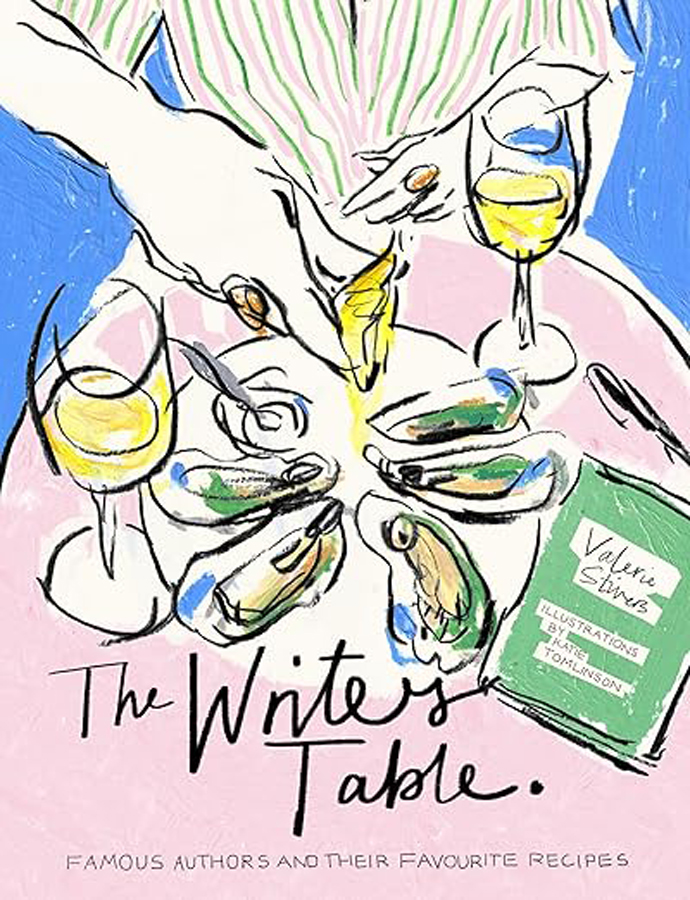
From The Writer’s Table by Valerie Stivers, Frances Lincoln, €23.
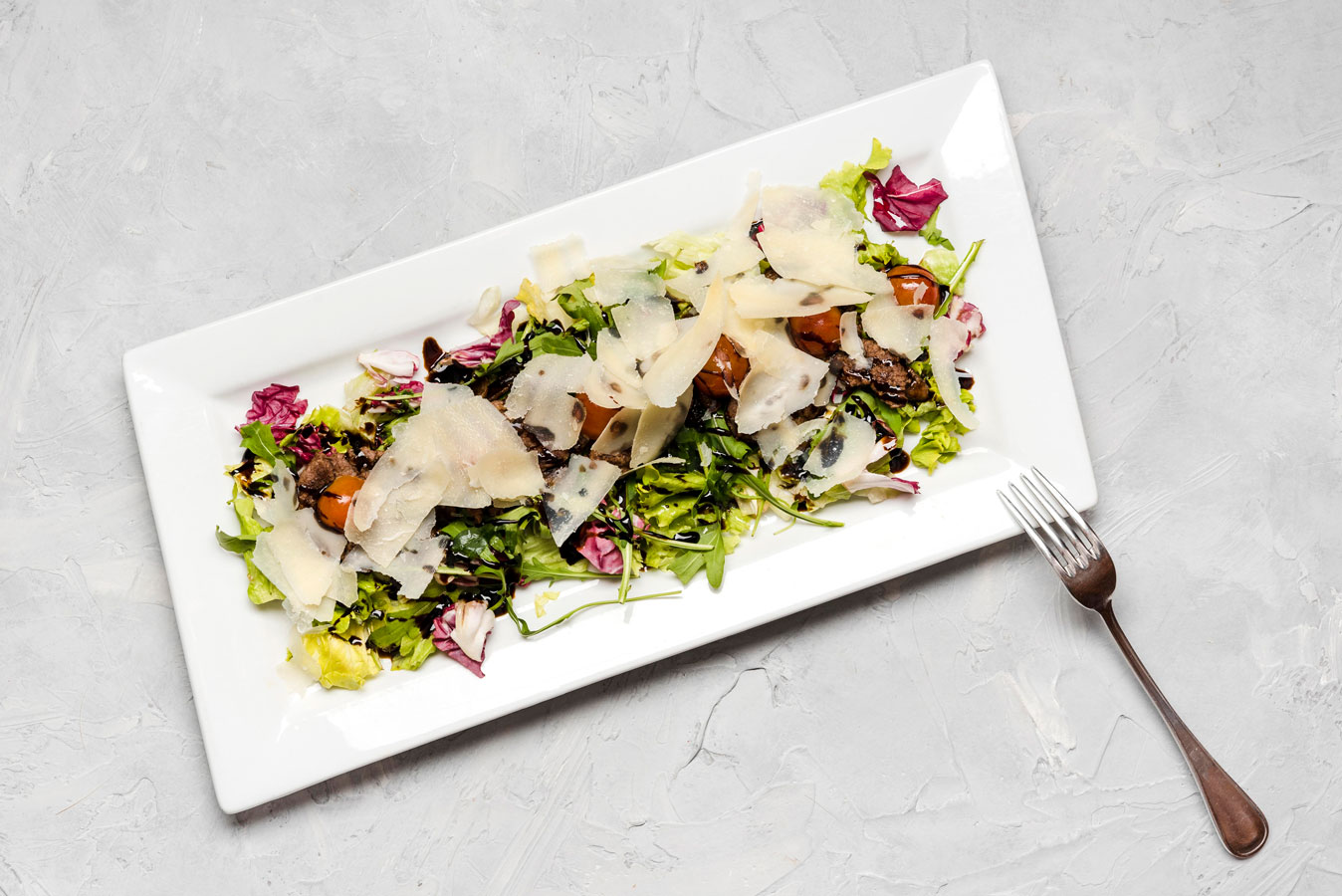
Joan Didion’s Parsley Salad For Entertaining
Serves 35–40
8 bunches Italian parsley
Blend 16 T olive oil with one head parsley until smooth
Blend in 4 T balsamic vinegar, salt and pepper
When ready to serve, place parsley in 11/3 C grated parmesan in bowl, toss with dressing.
From a collection of Joan Didion’s recipes on The Marginalian.
SEE MORE: A Guide To Lit Girl Autumn



